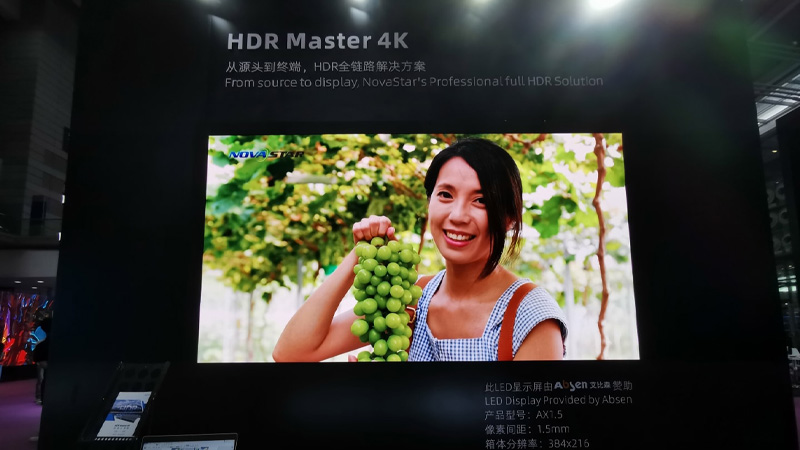
What is 4K Resolution?
Resolution and video quality are hot topics today, with enthusiasts obsessing over display quality, design, and output. Whether creating media for an audience or passionately consuming it, everyone demands more from their experience. The improving availability of high-definition displays means more viewers expect media that takes advantage of it.
1. Understanding 4K Resolution?
Building a connection with your community is easier when your content is visually stunning and immediately engaging. In today’s media-driven world, this means staying current with crystal-clear 4K content. This video definition holds a growing percentage of the consumer market both in homes and venues like theaters.
Resolution is a term used to describe the density of individual pixels within a display. Higher resolutions are capable of greater image fidelity and tend to produce a crisper, cleaner viewing experience.
● DCI 4K Resolution – This term specifically describes a designation introduced by the DCI (Digital Cinema Initiatives) to create professional cinematic standards for resolution. It refers to a specific pixel size of 4096 x2160. Due to its origins, it is generally referred to as Cinema 4k, or Native 4K. When visiting a movie theater, this is the resolution the video is displayed at.
Interlaced And Progressive Scans
To further confuse matters, these resolutions are often referred to as 2160p. The p in this case doesn’t mean pixels, instead it refers to a technology known as progressive scan. This refers to the ability of the display to load every pixel simultaneously, at the cost of bandwidth. Its opposite is the interlaced scan, which loads the pixels individually, and trades lower image quality for reduced bandwidth. The majority of displays you find will utilize progressive scan technology.
How 4K Resolution Helps Elevate Your Content
Since its introduction in 2007, the 1080p resolution has held a significant share of the HD market in homes and businesses. It has such a strong presence that most people refer to it as HD. It remains the most cost-effective and available resolution in the consumer market.
However, this is quickly changing as UHD technology becomes more widely adopted. As the ability to embrace higher-resolution content spreads through the home market, creators are driven to keep up. In addition, content creators are finding significant advantages in switching to recording in 4K resolution.
Media produced in a higher default resolution has greater options for utilizing it:
● It can be reproduced in a lower resolution for mobile viewing and bandwidth conservation.
● It’s possible to focus on smaller areas of the video without losing fidelity.
● Creators have a greater range for modifying colors and imagery within the video.
4K screen resolutions are becoming more available for both computers and TVs. However, content from creators who aren’t producing at this level won’t take advantage of the enhanced clarity. This is why so many creators are leaping to record in 4K. It allows them to deliver the best experience to their viewers, and to take advantage of the amazing post-production options.

2. Why Now is the Best Time to Invest in 4K Displays
2024 saw the beginning of an industry-wide move from 1080p being the standard for content. Today, 4K is beginning to be available in a growing number of markets. Streaming services are making rapid strides in this direction to meet market demands and to keep up with the competition. While broadcast television isn’t moving as quickly, it’s only a matter of time before it catches up. Gaming is a major industry that has long been at the forefront of display technology and is rapidly making the move to 4K.
One obstacle to 4K content that is slowly being removed is that of bandwidth. Bandwidth describes the amount of information that can be sent to your device through your internet connection. This problem is bigger than the maximum speeds available to home internet users. The entire World Wide Web will feel the impact of the increased demand until the infrastructure is properly updated. Thankfully, that’s a process that’s happening with increasing speed in a growing number of areas.
What this means for content consumers and creators is that now is the best time to start investing in a crisper, cleaner future for your displays. If you’re looking for a powerful option for creating 4k displays in an outdoor venue, investigate LEDSINO’s Outdoor LED Modules. These incredible devices can be linked together to create an outstanding experience your viewers won’t forget. Durable, reliable, easy to set up, and with outstanding versatility, they’re going to wow any audience.
While 4K is the highest resolution available in the market, display technology is always advancing. However, some of those on the industry’s bleeding edge are beginning to take advantage of 4320p, otherwise known as 8k. 8k has a resolution of 7680 x 4320 and is the absolute pinnacle of recording technology today.
Recording at this level provides even greater benefits in terms of flexibility and fidelity for content creators but at a significant cost. 8K media files are extremely large and very demanding in terms of bandwidth. There are few commercially available options for viewing 8K content, and those that are available are very expensive.
Further, the bandwidth concerns that are slowing the full adoption of 4K content are even more significant for this definition. In the future 8K will doubtless begin to take its place in the consumer market, but today it remains confined to a very niche community.

3. What Lays Ahead For 4K Display Technology?
While an industry-wide leap to higher resolution remains in the future, ongoing advancements are being made in display performance. One of the most notable is the adoption of QLED and OLED technology to enhance the visual experience 4K devices can deliver.
OLED TVs
This acronym stands for Organic Light-Emitting Diode. They’re called organic due to an organic compound within the diode. This compound produces light when exposed to electricity and is responsible for the depth of color this technology. While variations within this technology, these diodes are the foundation of how they all work. OLED was first developed in the early 2000s, and LG remained the only manufacturer that produced them until 2022.
- Why Choose an OLED 4K TV
● Depth And Contrast – These devices provide incredible degrees of blackness and contrast. This is achieved by completely turning off individual pixels providing absolute control over contrast.
● Broad Viewing Angles – The design of OLED TVs means that they can be enjoyed from almost any angle. This level of fidelity at all angles is due to the uniform nature of the screen design.
- Why Avoid OLED 4K TVs
● Visual Consistency – Regardless of the amount you spend on an OLED TV, you receive the same level of quality in its output. This makes them a great choice for the budget-conscious consumer.
● Susceptible to Burn-In – While both QLED and OLED displays are at risk of burn-in, OLED is much more susceptible. While this is avoidable by changing up your programming, it’s still a notable risk.
QLED TVs
Samsung joined the market that year with the introduction of its QD-OLED display. This display was put to market with the promise of enhanced brightness and color over OLED displays. It utilized new technologies that set it apart from the OLED TV that made it LGs primary competitor.
- Why Choose A QLED 4K TV
● Brighter Visuals – QLED TVs can produce levels of brightness superior to OLED. This improves the viewing experience when the display is in a bright room.
● Great Value At Larger Sizes – QLED TVs see great savings over OLED TVs as the size passes 65 inches. While OLED TV prices increase drastically as the size increases, large QLED TVs are much more affordable.
- Why Avoid QLED 4K TVs
● Washed Out Contrast – While full-array local dimming makes it possible to limit the amount of light coming through the display, it can’t eliminate it. Unlike OLED TVs black areas tend to be more washed out, having more of a grayish appearance and bloom around bright areas of the display.
● Inconsistent Image Quality – The performance of QLED TVs varies significantly across price points. Less expensive displays typically produce a lower-quality visual experience. This makes QLED technology a “you get what you pay for” situation.
Until 8K technology begins penetrating the consumer market, and local and global internet infrastructure improves, 4K will remain the King of Displays. Understanding how QLED and OLED impact the unit you select will ensure you make an informed decision.

4. How To Choose the Best 4K Display
If you’re getting ready to make your next long-term investment in a 4K display for your home or business, call the professionals. Our team will be there to answer your questions and provide insight into the performance and lifetime of our units. Together we’ll help you find the perfect choice that will stand the test of time while delivering incredible visual experiences! Call us today to get started.